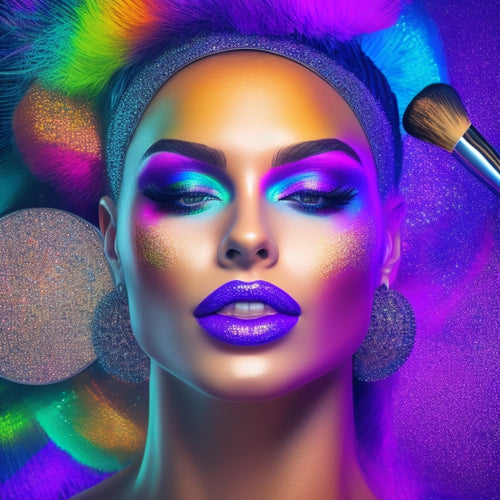
Unveiling the Allure of Dance Entertainment
Share
Dance entertainment has evolved into a widespread and dynamic art form, permeating various aspects of modern life, from commercials and theme parks to school events and community functions. The fusion of artistic expression and technological innovation has expanded creative boundaries, captivating diverse audiences worldwide. Through film, television, and digital media, dance entertainment has become more engaging, showcasing athleticism, artistry, and synchronization. From historical influences to modern adaptations, dance has revolutionized the entertainment industry. As we explore the intersection of dance and technology, the nuances of this engaging art form come into focus, revealing a world of complexity and beauty waiting to be explored.
Key Takeaways
• Dance entertainment has evolved through artistic, cultural, and technological advancements, captivating diverse audiences worldwide.
• Commercial dance in various settings, like theme parks and cruise ships, showcases versatility and athleticism in different genres and styles.
• The fusion of dance, cinematography, and editing has revolutionized the art form, conveying emotions and stories through movement and visual aesthetics.
• Dance in commercials effectively promotes products or services, relying on the connection between dance and the featured product for successful selling.
• The entertainment industry heavily relies on commercial dance in Broadway shows, musical theater productions, and film, making it a vital part of the industry.
Dance in Various Settings
Frequently, dance is employed as a versatile tool for entertainment in diverse settings, ranging from commercials and cruise ships to theme parks and school events. In theme park entertainment, dance is a key feature, showcasing historical, cultural, and social dance styles.
School dance teams, on the other hand, perform at school events, community functions, and competitions, requiring athleticism, artistry, and synchronization. These diverse settings demonstrate dance's adaptability and appeal.
In commercials, dance is used to promote products or services effectively, while on cruise ships, performers showcase their versatility in different dance genres and styles. By exploring these various settings, we can appreciate the multifaceted nature of dance as entertainment.
Evolution of Dance Entertainment
The evolution of dance as entertainment has been shaped by the convergence of artistic, cultural, and technological advancements, transforming the way dance is created, consumed, and perceived over time.
Historical influences, such as ancient civilizations' use of dance for storytelling and cultural expression, have laid the foundation for modern adaptations like Broadway shows and music videos.
Technological advancements have enabled the proliferation of dance entertainment through film, television, and digital media, allowing for greater accessibility and global reach.
This fusion of artistic expression and technological innovation has redefined the boundaries of dance entertainment, enabling artists to push creative limits and captivate diverse audiences worldwide.
Dance for the Camera
Moreover, the intersection of dance, cinematography, and editing has transformed the art form, allowing dancers and choreographers to showcase their work in innovative and engaging ways.
Dance for the camera has opened up new avenues for artistic expression, enabling dancers to convey emotions and stories through a fusion of movement and visual aesthetics.
Educational documentaries, for instance, have made dance more accessible, providing a platform for dancers to share their craft with a broader audience.
Additionally, the camera's lens has enabled the capture of intricate details, allowing viewers to appreciate the nuances of dance.
This synergy has elevated dance as an art form, offering a fresh perspective on the beauty and complexity of movement.
Commercial Dance and Industry
In the world of commercial dance, artists, directors, and production staff collaborate to create engaging entertainment. This collaboration necessitates dancers to be well-versed in various dance genres to capitalize on diverse job opportunities.
Commercial dancers, often referred to as 'dance gypsies,' frequently shift between different shows, showcasing their versatility in commercial and entertainment settings. The entertainment industry relies heavily on commercial dance, with Broadway shows and musical theater productions incorporating diverse dance styles.
The connection between dance and the featured product is essential for successful selling in commercials, with music and dialogue playing pivotal roles in enhancing effectiveness. As the entertainment industry continues to evolve, commercial dancers remain a critical component, bringing energy and excitement to various productions.
Frequently Asked Questions
Can Dance Entertainment Be a Lucrative Career for Professional Dancers?
Professional dancers can achieve financial stability through lucrative careers in dance entertainment, meeting industry standards, by securing consistent gigs, negotiating fair pay, and diversifying their skills to capitalize on various opportunities in film, TV, and live performances.
How Do Dancers Maintain Their Physical and Mental Health in the Industry?
Like a well-oiled machine, professional dancers require meticulous maintenance to thrive. To maintain physical and mental health, dancers must prioritize nutrition plans tailored to their specific needs and incorporate injury prevention strategies, such as cross-training and regular check-ins with healthcare professionals.
What Role Does Social Media Play in Promoting Dance Entertainment Worldwide?
Social media's viral challenges and digital platforms have revolutionized dance entertainment promotion, allowing artists to showcase their work, engage with global audiences, and foster a sense of community through shared experiences and hashtag campaigns.
Are Dance Classes Necessary for Becoming a Skilled Dancer in Entertainment?
While natural talent provides a foundation, formal training is essential for refining skills and adapting to diverse entertainment settings, as it enhances technique, versatility, and professionalism, ultimately distinguishing skilled dancers in the entertainment industry.
Can Dance Entertainment Be Used as a Form of Cultural Diplomacy?
"Did you know that 71% of international conflicts are resolved through cultural exchange? Dance entertainment can indeed be a powerful tool for cultural diplomacy, fostering international relations through cross-cultural understanding and artistic expression."
Related Posts
-

Get Certified in Dance Makeup With Online Courses
You can gain a recognized certification in dance makeup through online courses, which demonstrate your expertise and ...
-

Essential Performance Apparel for Every Gym Session
Choosing the right performance apparel is essential for maximizing your gym sessions. Look for moisture-wicking mater...
-

Winter Dance Blanket: Perfect Super Bulky Knit
The Winter Dance Blanket is a delightful super bulky knit pattern designed for effortless creation, featuring a simpl...


